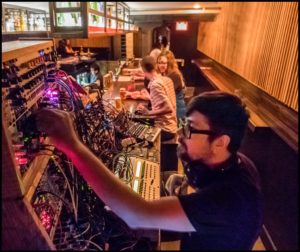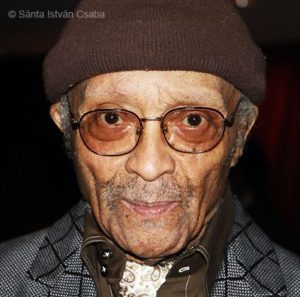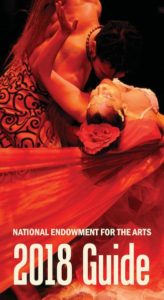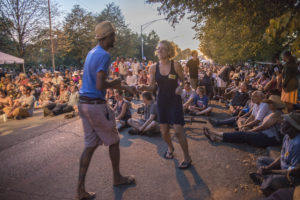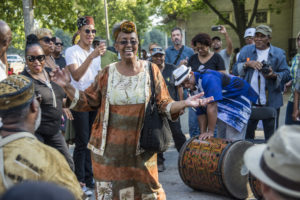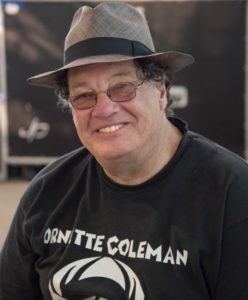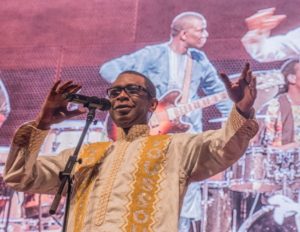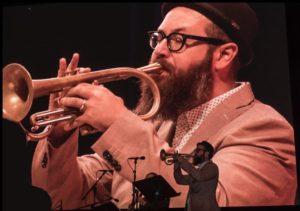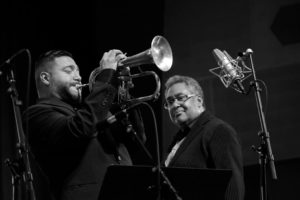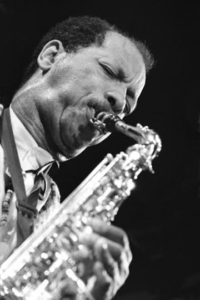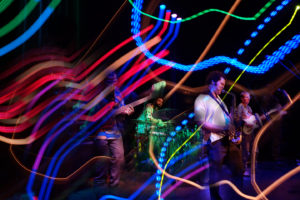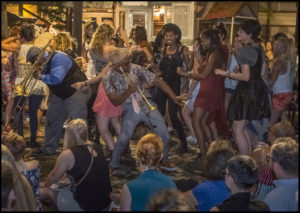K-rAd freely improvised and spontaneously composed an original, pulsing, burbling, chiming, floating and ripping, multi-layered, deep and flowing funky-bassed, percussion-lively suite over about three hours last night (7/25/18), using his elaborate, sound-unbound Euro-rack synthesizer setup to stir, smooth and spice social interactions in a seemingly unlikely Chicago venue for such a thing. Down an alley, through a back […]
Cecil Taylor, dead at 89, as celebrated when he’d turned 80
The brilliant, challenging, perplexing and incomparable pianist/improviser/composer Cecil Taylor died April 5, 2018, at age 89. Here’s what I wrote of him to celebrate his 80th birthday: Cecil Taylor, unique and predominant, 80 years old 3 27 09 Cecil Taylor is the world’s predominant pianist by virtue of his technique, concept and imagination, and one of […]
Jazz and beyond projects with 2018 NEA funding support
Given all the noise, the National Endowment for the Arts’ $25 mil for arts, literature and education announced Feb. 7 may have been overlooked. But these funds and the projects they support, nationwide, should be noted. From more than $3 million going to initiatives strictly labeled “Music” (exclusive of “Musical Theater” or “Opera”) here’s my subjective selection of […]
Hyde Park Jazz Fest, summer’s last dance (photos)
Chicago’s Hyde Park Jazz Festival in the first days of fall (Sept. 23 & 24th) which were unusually hot, is an exceptional event, curated for creative artistry, local and otherwise, drawing a highly diverse crowd to a fair that mixes popular and specialized performances at a range of boutique venues. Produced by an independent 501c3, the 11-year-old Hyde […]
Jazz community upends Englewood’s bad rep
The 18th annual free Englewood Jazz Festival in south side Hamilton Park last Saturday (9/16) affirmed the best of Chicago’s grassroots culture, promoting an opposite image of this challenged neighborhood as a dangerous place — unless one fears powerful, creative music that speaks as directly as dance rhythms to its family of listeners. Produced on behalf of the Live […]
My Q&A for Blues@Greece & Spirit of Jazz Award
Jazz, blues, American literature and where I’d go for a day in a time machine are topics I address in an email interview with Michalis Limnios who blogs at Blue@Greece. I post this item out of sheer vanity, reinforced by my being presented with a Spirit of Jazz Award tomorrow (9/16) by the Englewood Jazz […]
Youssou N’Dour on stage & screen, PoKempner photos
Photo-journalist Marc PoKempner‘s images from the Chicago Jazz Fest, as featured in my previous post, and these from Senegalese superstar Youssou N’Dour’s rousing who two weeks earlier, exhibit how he’s dealing straightforwardly and creatively with the screen backing musicians at the Pritzker Pavilion of Millennium Park. Giving us eyefuls to enjoy. Here’s what we can […]
Jazz on Millennium Park’s big screen – PoKempner photos
A 40-by-22½-foot LED screen is a dominating feature of the stage in the Pritzker Pavilion of Chicago’s Millennium Park, difficult to ignore though many try. Photographer Marc PoKempner does the opposite in his shots from the 39th annual Chicago Jazz Festival: he uses what he (and everybody else) sees to create striking images, in the […]
Chicago Jazz Fest expanded review & Deutsch photos
My DownBeat review of the 39th annual Chicago Jazz Festival held over Labor Day weekend in and spilling out of Millennium Park, highlights the best I heard — including the specially organized big band led by trumpeter Jon Faddis, making big fun from his mentor Dizzy Gillespie‘s fresh-as-fire arrangements dating 60 to 70 years back. (Gotta wonder what a […]
War for laughs: Marx Brothers, Strangelove, Chaplin, Lehrer
My father taught me at age 8 to trust the Marx Brothers’ for trenchant social commentary. Here’s Groucho, Chico, Harpo and Zeppo in Duck Soup. On the night of my 17th birthday I sat in a theater, alone, watching the incomparable Dr. Strangelove, or How I Learned to Stop Worrying and Love the Bomb . . . Thanks […]
Great new jazz photography — Dee Kalea’s campaign
Dee Kalea of Creative Music Photography is old school, in that she’s created black and white images of jazz musicians in performance, closeup, usually one-to-a-frame. The passion she’s captured, however, is timeless. How she became alert to the precise moment of creative rapture, and intimate with the music beyond the musicians themselves, is a story […]
Great new jazz photography #2: Lauren Deutsch’s Made in Chicago portfolio
“Made in Chicago” is true of the photography of Lauren Deutsch, and also the name of the four-day-long collaborative jazz festival she’s organized in Poznan, Poland for the past 12 years as artistic director (formerly with Wojceich Juszcsak) on behalf of the Jazz Institute of Chicago. The theme of this year’s fest was “Freedom.” The photos here […]
Great new jazz photography: Marc PoKempner portfolio from New Orleans
Photos of musicians making music — visualizations stirred in the photographers by watching sounds manifest — are exciting, and as different in style as the photographers and musicians themselves. Marc PoKempner ‘s portfolio from New Orleans of the Preservation Hall Jazz Band with Cuban drummers at the Music Box Village, a non-profit community arts garden, is the first of […]

